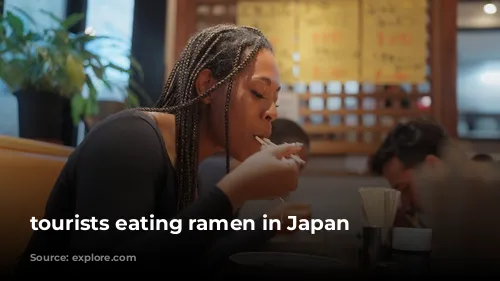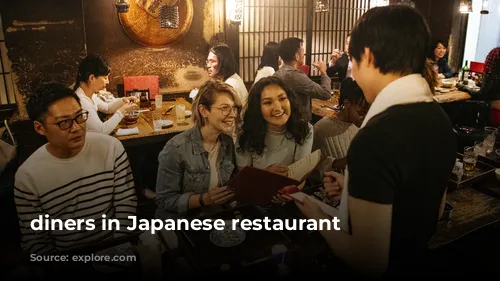Japan is a hot destination right now, drawing travelers from around the globe. After a two-year hiatus due to the COVID-19 pandemic, Japan’s tourism sector has bounced back with a vengeance, smashing visitor records.

What Makes Japan So Appealing?
It’s easy to see why so many people are captivated by Japan. From the futuristic cityscape of Tokyo’s Shibuya ward to the serene beauty of ancient temples and shrines, the country offers a diverse and fascinating tapestry of experiences. And then there are the museums – from the heart-wrenching Hiroshima Peace Memorial Museum to the whimsical Unko Museum dedicated to the world of poop, there’s something for everyone.

Navigating the “Japanese Only” Signs
While Japan can feel like a playground for many tourists, there are pockets where the welcome mat isn’t always rolled out. You might encounter “Japanese only” signs outside some restaurants and casual pubs known as “izakayas.” These signs, while seemingly exclusionary, are often a reflection of cultural and linguistic realities.
The Language and Cultural Barrier
Despite the influx of tourists, the vast majority of diners in Japanese restaurants are locals. In fact, Japanese people make up a staggering 97.5% of the population. Add to that the fact that Japan ranks relatively low in English proficiency, and it becomes clear why some establishments might hesitate to welcome guests they fear might struggle to communicate and understand their culture.
Understanding the “Japanese Only” Perspective
Restaurant staff might not have translated menus or the linguistic skills to explain their dishes to non-Japanese speakers. In some cases, cultural differences also come into play. For instance, modifying dishes, even for dietary reasons, is not as common in Japan as in other countries. Additionally, showing up late or missing a reservation, while considered trivial in some places, is seen as disrespectful in Japan. These cultural nuances can contribute to the reluctance of some restaurants to serve non-Japanese customers.
Don’t Let the “Japanese Only” Rule Spoil Your Trip
While encountering “Japanese only” restaurants can be disheartening, remember that they are not commonplace, especially in bustling cities like Tokyo and Osaka. They are often small, easy-to-miss establishments like tiny izakayas or snack bars.
Finding Food That Welcomes You
To avoid any potential disappointment, stick to restaurants known for catering to foreign visitors. Chain restaurants often have English menus and a welcoming atmosphere. If you’re keen on experiencing local, independent eateries, check online reviews written by non-Japanese customers. Reviews solely from locals might indicate that the restaurant isn’t as accommodating to international visitors. But on the bright side, you might also stumble upon a hidden gem!
Facing Rejection? Don’t Worry!
If you’re turned away at a restaurant door, don’t let it get you down. With an estimated 60,000 restaurants in Tokyo alone, and countless more across Japan, you’ll be spoilt for choice, from Michelin-starred establishments to quirky maid cafes.

